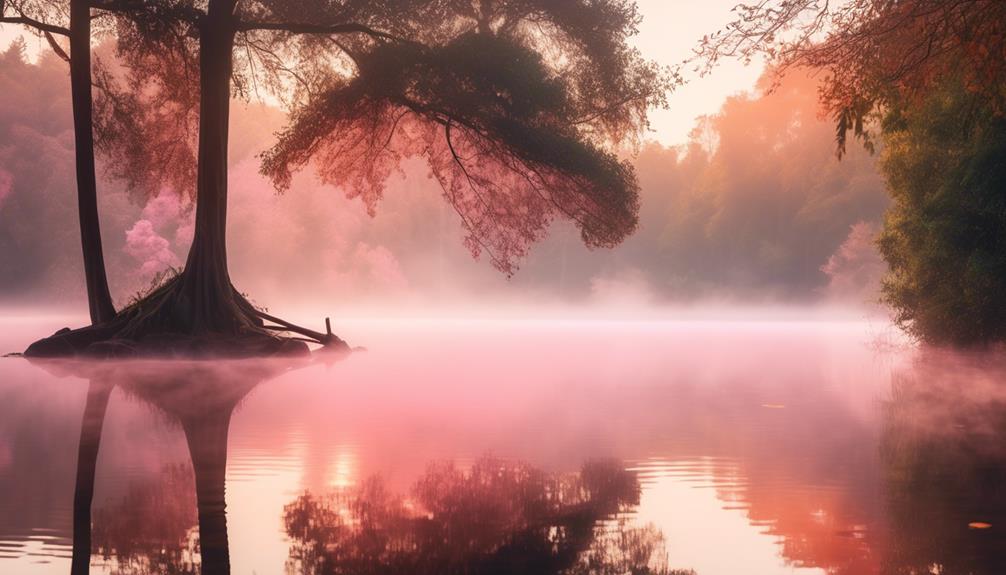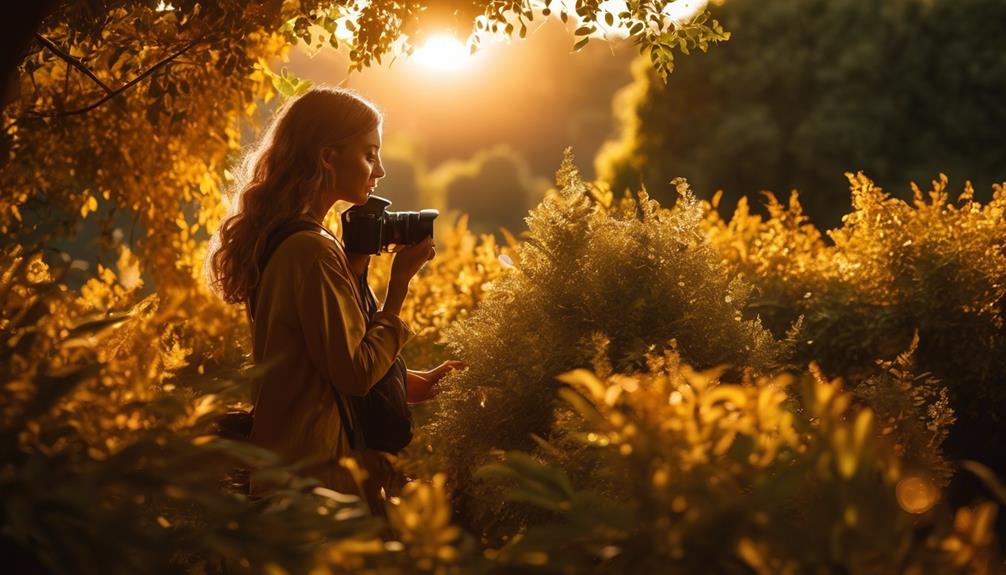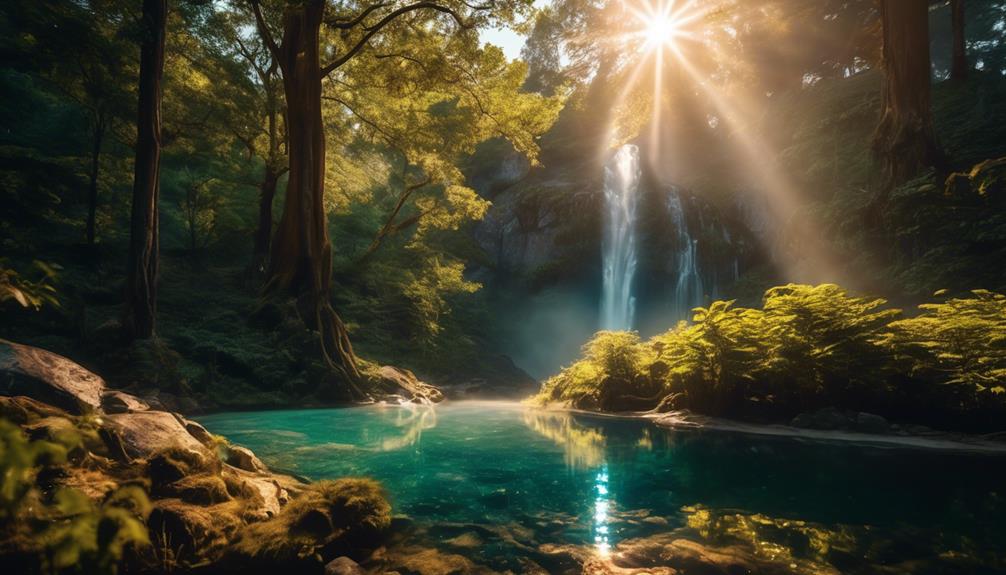Please note this post may contain affiliate links picked by me (Jay) that I have deemed may be of interest or relevant to you the reader of this.
These links do not affect the cost of the thing if you decide to purchase but i may get a little money if you choose to purchase.
For more information on my affiliate link policy click here.
Did you know that nature and landscape photography is one of the most popular genres among photographers? With its ability to capture the beauty and serenity of the natural world, it's no wonder that so many people are drawn to this art form.
But where do you start if you want to take stunning nature and landscape photographs? In this discussion, I will guide you through the basics of nature and landscape photography, from essential equipment to composition techniques, exposure and lighting, capturing wildlife, and even editing and post-processing.
So, if you've ever wanted to learn how to capture the breathtaking scenes of nature with your camera, join me on this journey and unlock the secrets of this captivating art form.
Key Takeaways
- In nature photography, having the right equipment, such as a macro lens and sturdy tripod, is essential for capturing intricate details and achieving steady shots.
- Composition plays a crucial role in landscape photography, with techniques like the rule of thirds, leading lines, and incorporating foreground elements enhancing the visual appeal and depth of the image.
- Understanding exposure and lighting techniques, such as metering modes, shooting during the golden hour, and using fill flash, can greatly impact the quality and mood of nature and landscape photographs.
- When photographing wildlife, it is important to study their behavior, respect their space, and use telephoto lenses to maintain a safe distance. Getting down to eye level and utilizing natural light can result in more intimate and engaging shots.
Essential Equipment for Nature Photography
When it comes to capturing stunning nature photographs, having the right equipment is essential. Whether you're a professional photographer or just starting out, investing in a few key pieces can make a world of difference in the quality of your images.
Two important techniques in nature photography are macro photography and long exposure, and having the right equipment for these techniques is crucial.
For macro photography, a dedicated macro lens is a must-have. These lenses are designed specifically for close-up shots, allowing you to capture the intricate details of small subjects like flowers, insects, and textures in nature. They offer a high level of magnification, enabling you to bring out the tiniest details with sharpness and clarity.
When it comes to long exposure photography, a sturdy tripod is essential. This will ensure that your camera remains steady during long exposure shots, preventing any blurriness caused by camera shake. Additionally, using a remote shutter release or a timer function can further enhance the stability of your shots. These tools allow you to take the photo without physically touching the camera, minimizing any potential movement.
Understanding Composition in Landscape Photography
Having the right equipment is crucial for capturing stunning nature photographs, and once you have the essential gear for macro photography and long exposure shots, it's time to delve into the art of understanding composition in landscape photography. Composition is the arrangement of elements within a photograph to create a visually pleasing and balanced image. It's what separates a good photograph from a great one.
Two important concepts to consider when it comes to composition in landscape photography are the rule of thirds and leading lines.
The rule of thirds is a guideline that suggests dividing your frame into nine equal parts using two horizontal and two vertical lines. The main subject or points of interest should then be placed along these lines or at the intersections. This technique adds balance and visual interest to your composition.
Leading lines are lines within your photograph that draw the viewer's eye towards the main subject. They can be anything from roads, rivers, or even tree branches. By incorporating leading lines, you create a sense of depth and guide the viewer through the image.
Understanding and applying these composition techniques will help you create more visually appealing and impactful landscape photographs. So, next time you're out capturing the beauty of nature, don't forget to consider the rule of thirds and leading lines to elevate your compositions to the next level.
Mastering Exposure and Lighting Techniques
To capture stunning nature photographs, mastering exposure and lighting techniques is essential. Understanding how to properly expose your image and manipulate light can greatly enhance the impact of your photographs.
One important aspect of exposure is metering techniques. By using different metering modes such as spot, center-weighted, or evaluative metering, you can accurately measure the amount of light in a scene. This allows you to adjust your camera settings accordingly and achieve a well-exposed image.
Another technique that can greatly improve your nature photography is shooting during the golden hour. This refers to the period shortly after sunrise or before sunset when the light is softer and warmer, creating a magical atmosphere. The golden hour offers beautiful lighting conditions that can transform an ordinary landscape into something extraordinary. Experimenting with different angles, compositions, and lighting during this time can result in breathtaking images.
Tips for Capturing Wildlife in Their Natural Habitat
Capturing wildlife in their natural habitat requires patience, skill, and a deep understanding of their behavior and environment. As a nature photographer, I've learned a few valuable tips that can help you capture stunning images of wildlife in their element.
First and foremost, it's crucial to study and observe wildlife behavior. Understanding their patterns, feeding habits, and social interactions will give you an advantage when it comes to capturing those perfect moments. Spend time researching the animals you wish to photograph, and be patient in waiting for the right opportunity to present itself.
Ethical considerations should also be a priority when photographing wildlife. Always respect their space and avoid disrupting their natural behavior. Keep a safe distance, use telephoto lenses if needed, and never interfere with their environment. Remember, we're visitors in their world.
Innovate your approach by trying different angles and perspectives. Get down to their eye level to create a more intimate connection with the subject. Use natural light to your advantage and consider the composition to tell a story. Be prepared and ready to capture those fleeting moments that showcase their character and beauty.
Capturing wildlife in their natural habitat is an exhilarating experience. It requires dedication, observation, and a passion for the natural world. By understanding wildlife behavior and practicing ethical considerations, you can create powerful and impactful images that truly showcase the beauty of nature.
Editing and Post-Processing Techniques for Nature and Landscape Photography
Editing and post-processing techniques play a crucial role in enhancing the beauty and impact of nature and landscape photographs. With advanced editing techniques and color grading techniques, photographers can take their images to the next level and create stunning visual masterpieces.
One of the most important aspects of editing nature and landscape photographs is ensuring proper exposure. Adjusting the brightness, contrast, and highlights can bring out the details and make the image more vibrant.
Another technique that can greatly enhance the image is color grading. By manipulating the color tones, photographers can create a specific mood or atmosphere in their photographs. For example, adding warm tones can create a sense of warmth and tranquility, while cool tones can evoke a sense of calmness and serenity.
Additionally, cropping and straightening the image can help eliminate distractions and create a more balanced composition.
Frequently Asked Questions
How Can I Protect My Camera Equipment From Harsh Weather Conditions During Nature Photography?
I protect my camera equipment from harsh weather conditions during nature photography by using protective gear and practicing regular camera maintenance.
It's important to invest in weatherproof camera bags or cases to shield the equipment from rain, snow, and dust.
Additionally, I ensure that I clean and dry my gear after each shoot to prevent any damage.
Taking these precautions allows me to capture stunning shots in any weather condition.
What Are Some Tips for Finding the Best Locations for Landscape Photography?
Finding remote locations and understanding the importance of lighting conditions are key elements in capturing stunning landscape photographs.
Exploring untouched places allows me to create unique and innovative compositions that stand out from the crowd. By venturing off the beaten path, I discover hidden gems that offer breathtaking views and untamed beauty.
Additionally, being mindful of the lighting conditions helps me capture the perfect moment when the sun illuminates the landscape in a way that evokes emotion and captivates the viewer.
How Can I Achieve a Sharp Focus on Both Foreground and Background Elements in Landscape Photography?
To achieve a sharp focus on both foreground and background elements in landscape photography, depth of field techniques are key. By adjusting the aperture and focal length, I can control the amount of sharpness throughout the image.
Additionally, balancing the exposure for both the foreground and background elements is crucial. I often use techniques like bracketing or graduated neutral density filters to capture the full range of light and ensure all elements are properly exposed.
It's all about finding that perfect balance for stunning landscape shots.
Are There Any Specific Camera Settings That Can Help Capture the Movement of Wildlife in Their Natural Habitat?
There are several camera techniques that can help capture the movement of wildlife in their natural habitat.
By using a fast shutter speed, you can freeze the action and capture the details of the animal's behavior.
Additionally, using continuous autofocus and burst mode can help you track the movement of the wildlife and capture multiple shots in quick succession.
These settings allow for flexibility and innovation in capturing dynamic wildlife moments.
What Are Some Creative Editing Techniques That Can Enhance the Mood and Atmosphere of Nature and Landscape Photographs?
When it comes to enhancing the mood and atmosphere of nature and landscape photographs, there are some seriously cool post processing tricks that can take your images to a whole new level.
Creative editing techniques like adjusting the colors, adding filters, and playing with the lighting can completely transform the feel of a photo.
It's like adding a touch of magic to an already beautiful scene, making it even more captivating for your audience.
Trust me, the results are mind-blowing!
Conclusion
In conclusion, nature and landscape photography is a captivating art form that requires essential equipment and a good understanding of composition, exposure, and lighting techniques.
While some may argue that capturing wildlife in their natural habitat is challenging, with practice and patience, it's possible to capture stunning images.
Additionally, mastering editing and post-processing techniques can enhance the beauty of your photographs.
So grab your camera and explore the wonders of nature through the lens. Happy shooting!


